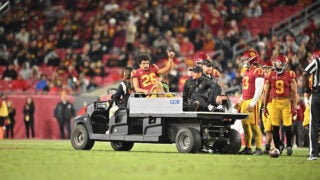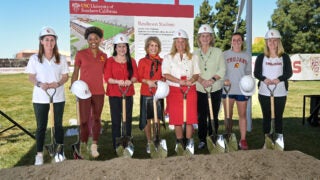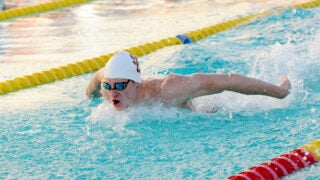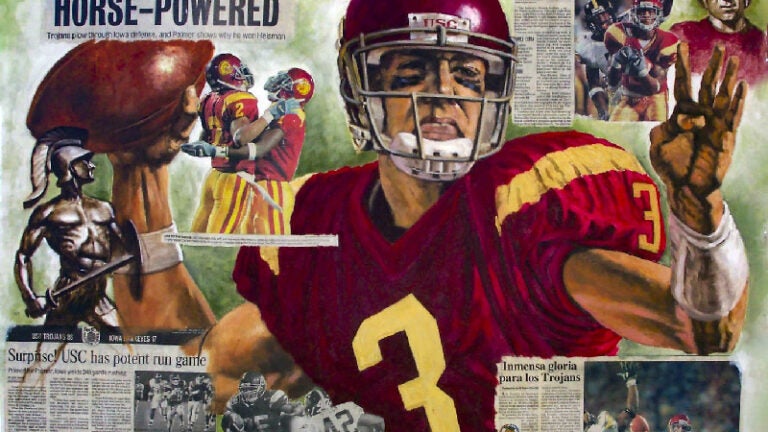
(Photo courtesy of Marita De Leon)
The Football Player Born on Campus
The late Manuel De Leon, a celebrated painter, Trojan lineman and lifelong USC supporter, grew up in a small home near where Heritage Hall stands today.
Many USC alumni are proudly Trojans for life, but few have a stronger claim to being born a Trojan than Manuel De Leon ’51, MS ’61.
The well-known oil painter and former USC football player proudly described his illustrious birthplace to anyone who would listen. “Any time we walked through campus, my dad would always say, ‘This is where I was born,’ and he’d be pointing at Heritage Hall,” says daughter Marita De Leon ’92. “And we’d say, ‘How is that possible?’”
With a little archival research, the family discovered that in the 1920s, USC’s campus had yet to expand to its current western border of Vermont Avenue. Surrounded by residential blocks lined with single-family homes and small businesses, the University Park Campus’ main buildings — including the newly built Bovard Auditorium (completed in 1921) — were clustered nearer to the intersection of Child’s Way and Trousdale Parkway. So the little white house where De Leon was born, probably at the end of 36th Street, indeed stood near the current-day location of Heritage Hall.
His siblings at his side, a young De Leon would race around the University Park Campus, play hide-and-seek in the Exposition Park Rose Garden and marvel at the Los Angeles Memorial Coliseum as crowds streamed in to watch the Trojans on game day. “My dad would look at his siblings and say, ‘You know what? I’m going to go to school here,’” Marita De Leon says. “And he did it. He went from being that little Mexican boy outside the stadium selling papers for three cents to being a football star at USC.”
The future offensive lineman for the Trojans first studied on campus at 32nd Street Elementary School. He discovered a talent for the arts during his time at Fremont High School, which led De Leon to take courses at ArtCenter College of Design, then Otis College of Art and Design, where he studied under artist-in-residence Norman Rockwell.
After a brief stint in the U.S. Army Air Forces, he moved back to Los Angeles and enrolled at Compton College, where he won consecutive junior college national championships in football. USC recruiters took notice of his skills on the line and offered him a football scholarship in 1948. He played for the Trojans for three years while earning his degree in education. De Leon loved to tell the story of welcoming a young tailback recruit, future All-American and Pro Football Hall of Fame member Frank Gifford ’56, with a thunderous tackle.
He later taught in Los Angeles city schools, then on American military bases in France and Germany, where he met his wife Helga, a U.S-educated German. They returned to Los Angeles and strengthened their Trojan ties, with his wife earning her teaching credential and De Leon completing his master’s in education. Marita De Leon says that his USC pedigree was a tremendous source of pride for her father throughout his life.
“He was a very good-looking man and a really talented artist, and he was very humble about both,” she says. “But when it came to being a Trojan, his chest just plumed.”
On game days, De Leon would tailgate on campus in cardinal polyester pants and a gold shirt accessorized with a watch, ring, hat and shoes emblazoned with the USC logo. “Everything was USC,” Marita De Leon says. “Everything.”
She remembers her father pushing her through the crowd as a child to the front of the Trojan Marching Band, so he could capture video of her marching alongside the drum major and leading the Spirit of Troy through throngs of fans on the way to the Coliseum.
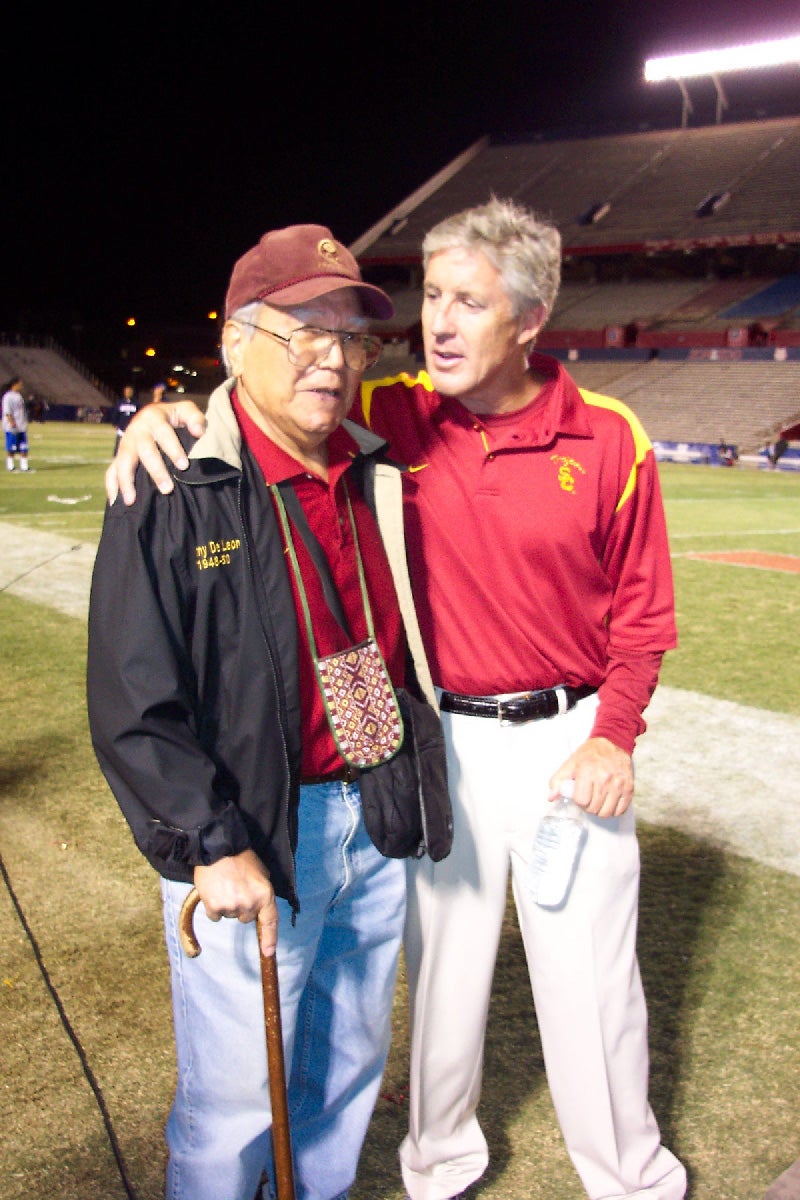
Thanks to his decades-long job as a professor of art at Cerritos College, De Leon remained close to his beloved Trojans through the early 1990s. Even when he retired and moved to Arizona, he came back for games — including when he and other football players in his graduating class were honored at the Coliseum on their 50th anniversary.
He also put his art skills to the task of memorializing Trojan greats, like a well-regarded portrait of quarterback Carson Palmer ’02.
On December 6, 2019, De Leon died with his family by his side in Tucson, Arizona, shortly before his 94th birthday. He is survived by his wife, Helga; children, Marcus, André and Marita; and grandchildren, Liesl and Mila.
In his final moments, De Leon held a USC football and donned his USC hat and slippers. On his hands, he wore his wedding ring and a unique USC ring his wife had found in a jewelry studio for him many years earlier. “He was such a Trojan,” Marita De Leon says. “His blood ran cardinal and gold. Oh yeah, he was so proud.”

